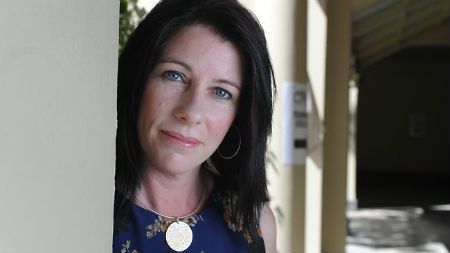Vikki Wakefield talks about the process of writing her Young Adult novel,

‘They call me Friday. It has been foretold that on a Saturday I will drown…’
Seventeen-year-old Friday Brown is on the run, trying to escape memories of her mother and the family curse. She befriends Silence, a strange boy with a troubled past. But it is the charismatic Arden who will challenge Friday in more ways than she’d like. In Murungal Creek, a ghost town in the outback, Friday must face her own past. She learns that family, like fate, is more than what you’re born with—and that love is always worth fighting for.
I wrote Friday Brown very differently to my first novel. In writing All I Ever Wanted, I began with a character, Mim, and followed her wherever she led. Friday Brown started with the water-tank scene from Chapter 28, near the end of the book (a scene that clearly wasn’t a beginning but I couldn’t let it go), and I worked in many directions until the story took shape around it. I asked of Friday, ‘How did you get here?’ instead of, ‘Where are you going?’
In the spirit of working backwards, I wrote the prologue last, after the major draft was complete and I’d realised something was missing. Reading through, I discovered I’d (unintentionally?) explored the duality of fire, earth, air, and humanity—but not water. Once I’d written the prologue, where Friday’s mother Vivienne tells her a campfire tale about the Brown drowning curse, the story really came together.
I remembered reading ‘The Drover’s Wife’ by Henry Lawson when I was a teenager, and thinking that it was a story better heard than read. I wanted Friday Brown to have the ‘feel’ of a campfire tale, the kind of story that draws you in and makes your hair stand on end and leaves you wondering how much is true. And so Friday’s story emerged—much like the campfire tales her mother, Vivienne, had told—with threads of fantasy and foreboding woven through it.
The book is structured in two parts, in keeping with my tendency to explore the ‘flip-side’ of things. Part One – The City, is set in the underbelly of an unnamed (but distinctly Australian) major city where homeless children are invisible and Part Two – Dust, takes place in Murungal Creek, a crumbling ghost town on the edges of the red heart of Australia. The outback setting was a joy to write—so beautiful, yet deadly—and I think I’ve left my own fear and awe on the page.
I don’t set out to write around predetermined themes in my novels—often they take me by surprise. The themes in Friday Brown came about through the interaction between characters and the momentum of the story. There were ideas that arose as I wrote: What is family? Does character decide destiny? And the duality of human nature—is there good and bad in all of us and is there a seminal point where we have to choose a side?
I did base Friday’s character development around a single question: Is Friday the sum of her past and, if her history is based on lies, who is she? I wondered, how far could I pare back her character by taking away her mother, her past, her friend and her identity, and to what extremes would she go to find herself?
I’ve heard Friday Brown described as a love letter to Australia and perhaps it is. This was such an awkward, messy book to write—much like piecing together a quilt from mismatched pieces of fabric, without a pattern. But at some point after the first draft was written, I abandoned reason and ran on instinct, which is an interesting parallel between my writing process and the character, Friday Brown.
Friday Brown
A book by Booki.sh


